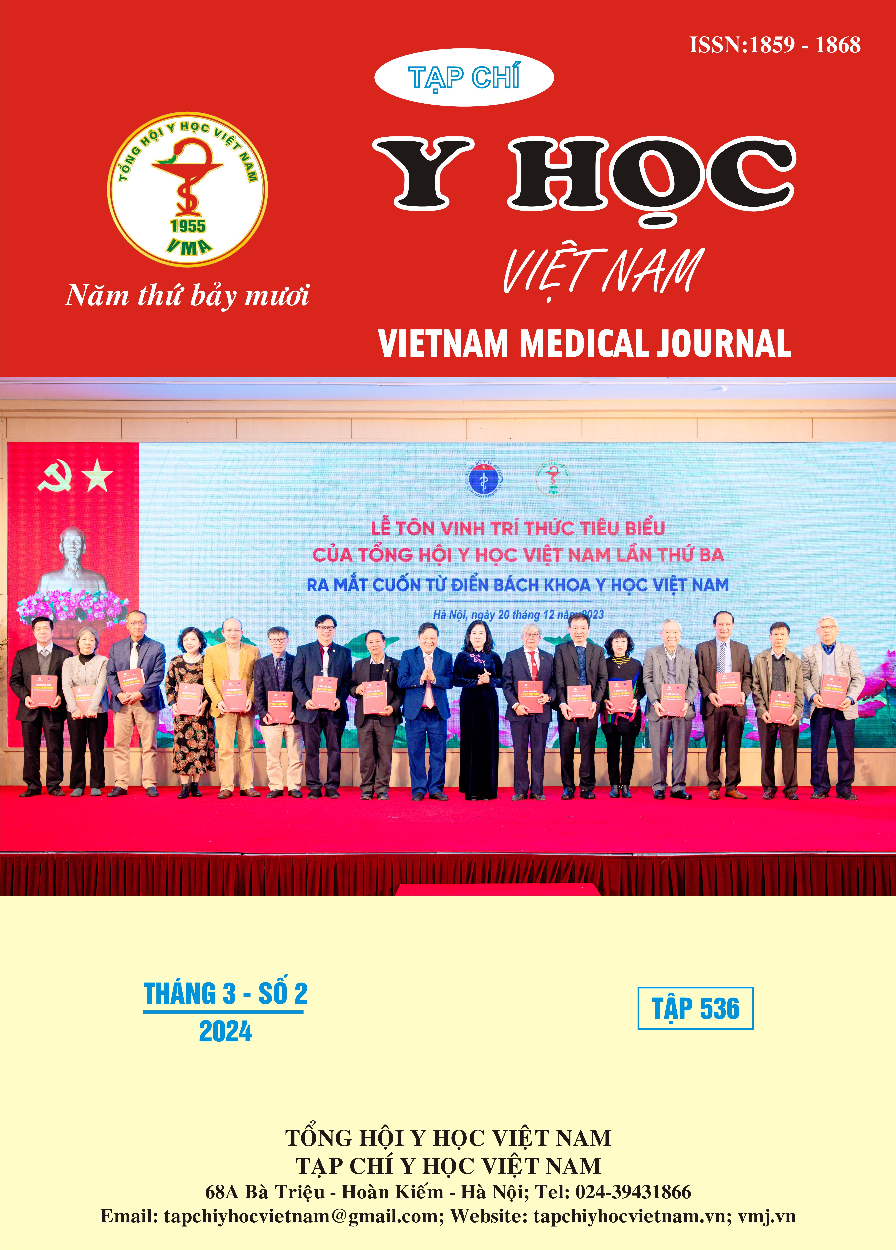CARABELLI'S TRAIT ON THE MAXILLARY FIRST AND SECOND MOLARS OF DENTAL STUDENTS AT HUE UNIVERSITY OF MEDICINE AND PHARMACY
Main Article Content
Abstract
Background: The cusp of Carabelli is accessory cusp commonly found on the mesial palatal surface of the maxillary molars. It plays an important role in racial recognization. The aim of study was to investigate the expression of Carabelli's trait at different levels on the maxillary first and second molars. Methods: Descriptive cross-sectional study was conducted on 75 students from Faculty of Odonto-Stomatology. For each student, maxillary alginate impression was taken and a diagnostic cast was poured with dental stone. Carabelli's trait on the maxillary first and second molars were evaluated according to Dahlberg's classification, and were classified into three groups: No Carabelli's trait, pit and groove, tubercle. Results: The proportion of maxillary first molars and second molars exhibiting Carabelli's trait were 74% and 28.6%, respectively; the percentage of teeth not showing Carabelli's trait were 26% and 71.4%, respectively. There was no difference in the expression of Carabelli's trait on the maxillary first and second molars between men and women, between the right and left jaws (p>0.05). Conclusions: Carabelli's trait was present in both maxillary first and second molars, with a greater prevalence in maxillary first molars.
Article Details
References
2. Huỳnh Kim Khang. Đặc điểm Carabelli trên răng cối lớn thứ nhất hàm trên người Việt. Tạp chí Y học Việt Nam. Tháng 10/2013. Số đặc biệt, tr.75-78.
3. Hsu JW, Tsai PL, Hsiao TH, Chang HP, Lin LM, Liu KM, Yu HS, Ferguson D. Ethnic dental analysis of shovel and Carabelli's traits in a Chinese population. Aust Dent J. 1999 Mar; 44(1): 40-5. doi: 10.1111/j.1834-7819. 1999.tb00534.x
4. Joshi MR, Godiawala RN, Dutia A. Carabelli's trait in Hindu children from Gujarat. J Dent Res. 1972 May-Jun; 51(3):706-11. doi: 10.1177/ 00220345720510030301
5. Kamatham R, Nuvvula S. Expression of Carabelli trait in children from Southern India - A cross sectional study. J Forensic Dent Sci. 2014 Jan; 6(1):51-7. doi: 10.4103/0975-1475.127772
6. Kirthiga M, Manju M, Praveen R, Umesh W. Ethnic Association of Cusp of Carabelli Trait and Shoveling Trait in an Indian Population. J Clin Diagn Res. 2016 Mar; 10(3):ZC78-81. doi: 10.7860/JCDR/2016/17463.7504
7. Smitha T, Venkatesh D, Veeresh M, Hema KN, Sheethal HS, Vidya MA. The cusp of Carabelli: Frequency, distribution and type in the Bengaluru population. J Oral Maxillofac Pathol. 2018 Sep-Dec; 22(3):418-422. doi: 10.4103/ jomfp.JOMFP_254_18
8. Townsend GC, Martin NG. Fitting genetic models to Carabelli trait data in South Australian twins. J Dent Res. 1992 Feb; 71(2):403-9. doi: 10.1177/00220345920710021001


